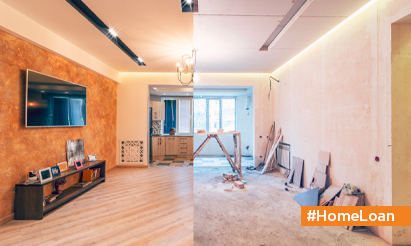Benefits and drawbacks of obtaining a top-up loan
A top-up loan meets all of your financial needs, including home remodelling and registration to purchasing furnishings and fittings and extra parking space. Should you take out a top-up loan? Continue reading to learn more.
What exactly is a top-up loan?
A top-up loan is a loan that is made by an existing house loan. This service is provided by banks and financial organisations to current home loan clients. Furthermore, the house loan length varies and might range from 10 to 20 years based on the entire tenure of the home loan. These loans provide an excellent chance to overcome any financial blockages, regardless of the objective for which they are necessary.
Experts claim that “The amount of top-up loan that a consumer can obtain differs from one financial institution to another,” says Home Loan Expert in Gurgaon. A top-up loan and the existing house loan amount should preferably be no more than 80% of the entire value of the property.”
For example, Mr X obtains a mortgage loan for a property of Rs 20 lakh. After repaying Rs 8 lakh, he wishes to obtain a top-up loan for personal purposes. In this case, the maximum extra loan available to Mr X is Rs 4 lakh (12+4=16), or 80% of the entire property value.
What are the requirements for a top-up loan?
The qualifying conditions for a top-up loan are the same as those for a house loan, namely-
- There should be no more than one EMI bounce in your prior year’s bank statement.
- If an EMI is late, it must be resolved before the next deadline.
- Proper payments of mortgage EMIs for six months are required.
- Criteria in general
- The applicant’s age must be between 21 and 65 years old.
- Indian or Non-Resident Indian nationality
- Salary or self-employment as a profession
The benefits and drawbacks of a top-up loan
- There are no expenditure restrictions.
A top-up loan’s proceeds can be utilised for any purpose relating to your current property. It can be used to acquire a parking place, renovate the property, purchase furnishings, or for other personal expenses.
- Rapid procedure
Because it is exclusively available to exist home-loan clients, it may be obtained within two to three days. Furthermore, the verification procedure is straightforward and rapid.
- Interest rates are low.
Top-up loans are a profitable option to raise cash since they offer lower interest rates than personal loans. The interest rates differ from bank to bank and might vary between 11% and 13%. A personal loan, on the other hand, may have an interest rate of up to 22 per cent.
- No mortgage is necessary.
An established home loan client may apply for a top-up loan without providing extra collateral to the lending company.
Cons
- Existing clients are eligible.
The main downside of top-up loans is that they are only available to exist home loan clients. Furthermore, consumers with a poor track record are not eligible for this service.
- No tax advantages.
Top-up loan amounts generated for personal reasons do not qualify for a tax break. The tax break is only available for specific uses related to house remodelling or building activities.
Disclaimer: The views expressed above are for informational purposes only based on industry reports and related news stories. PropertyPistol does not guarantee the accuracy, completeness, or reliability of the information and shall not be held responsible for any action taken based on the published information.




